X ray diffraction
Type of resources
Topics
Keywords
Contact for the resource
Provided by
Years
Formats
Representation types
Update frequencies
Scale
-

Experimental data originating from the NERC IRF project entitled "Calcium perovskite: the forgotten mantle phase". Data consists of: - large volume press synchrotron XRD ± ultrasonic velocity measurements (ID06-LVP ESRF) - diamond anvil cell XRD data (I15 Diamond) - Neutron Inelastic scattering data (IN8 ILL) - D111 deformation experiment XRD and imaging from (NE07 PF-AR, KEK)
-
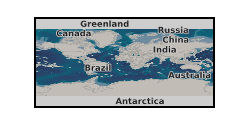
This dataset contains the raw data from X-Ray Diffraction (XRD) analysis of samples from 4 different field locations - Warton, Glengarnock, Derwent Howe, Harrington. The data was collected in 2022-2023. The data was collected for the purpose of identifying mineralogy of the collected samples. The data was collected by John MacDonald and Robin Hilderman (University of Glasgow) who retain the original data.
-
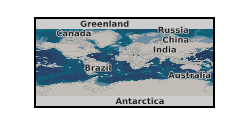
Dataset of material characterisation (X-ray diffraction) analyses to constrain the nature of materials produced during Fe(II)-silicate precipitation experiments from seawater in the presence of various metals.
-
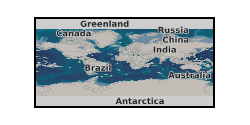
NERC Grant NE/M011488/1 X-ray powder diffraction patterns as xy datasets of limonites from Acoje (Philippines), Caldag (Turkey), Nkamouna (Cameroon), Piaui (Brazil) and Shevchenko (Kazakhstan) laterite deposits; reduced sulphide ore from Thakaringa Mine (Australia) and Captain deposit (Canada); processing residues from the Kevitsa Mine (Finland). The data were acquired during the NERC SoS Minerals CoG3 project between 2015 and 2018 using a PANAlytical X’Pert Pro diffractometer at the Natural History Museum, London, UK. Powdered samples were back loaded into a deep well holder, loaded into the instrument in reflection geometry and data collected using Co Kalpha radiation between 3 and 70 degrees 2Theta. These data were used primarily for phase identification. This may be useful within the mining sector, resource assessment, processing or prospecting, geo- or material scientists and processing engineers / metallurgists. The data were acquired in the Core Research Laboratories, Natural History Museum by the NHM CoG3 team. NERC grant: CoG3: The geology, geometallurgy and geomicrobiology of cobalt resources leading to new product streams
-
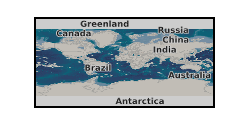
The data are nanoindentation, high-angular resolution electron backscatter diffraction (HR-EBSD), and transmission electron microscopy data collected on samples of synthetic forsterite bicrystals at room temperature. The data were collected in two samples, with high- and low- angle grain boundaries (HAGB, 60°, [100]/(011) and SB, 13°, [100]/(016)). The EBSD data are the basis for the HR-EBSD calculation. The HR-EBSD results are presented as Matlab data files. The nanoindentation data are categorised as a function of sample (‘ol13’ – low-angle grain boundary; and ‘ol60’ – high-angle grain boundary), and indenter tip geometry (spherical (with a 10 or 5 micron radius) and pyramidal (Berkovich). The data are presented in .xls files. The TEM data are presented as .tif files. The TEM data were collected in specific indents with various distances from the interfaces. These data have been published in the manuscript: : The Role of Grain Boundaries in Low-Temperature Plasticity of Olivine Revealed by Nanoindentation, with the DOI: 10.1029/2023JB026763
-
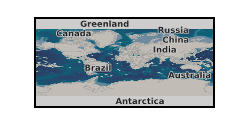
Terrestrial palaeo-environmental proxy data has been collected to examine orbital changes in wildfire activity in the Early Jurassic of the Mochras Borehole, Cardigan Bay Basin, Wales. To do this a high resolution charcoal abundance dataset was created and quantified in two size fractions, microscopic charcoal (10-125 µ) and macroscopic charcoal (>125 µ). To take potential changes in riverine influx and/or organic preservation in account on the charcoal abundance, palynofacies were analysed to document all terrestrial and marine organic particles present in the samples, and next to this, X-ray fluorescence data was gathered to assess detrital output. Mass spectrometry provided information on the carbonate and Total Organic Carbon content and bulk organic carbon isotopes. This information was used to look at changes in the lithology and the carbon cycle. Finally, clay mineralogical data was obtained to look at changes in the hydrological cycle in relation to wildfire activity. This dataset spans 951-934 mbs from the Mochras borehole, which is the time equivalent of ~350 kyr, in the Margaritatus Zone of the Upper Pliensbachian. The Mochras sediments have been deposited in the Cardigan Bay Basin, Wales. At the time of deposition, this location was positioned in the Laurasian Seaway at a paleolatitude of ~35°N. These datasets were obtained at a high resolution (10 cm) using X-ray diffraction, X-ray fluorescence, mass spectrometry and palynological preparations. This high resolution was acquired to analyse the presence of precessional orbital forcing on wildfire and the other proxy datasets. This data was collected, interpreted and analysed by Teuntje Hollaar, Claire Belcher, Stephen Hesselbo, Micha Ruhl, Jean-Franҫois Deconinck, Sarah Jane Baker and Luke Mander. The complete dataset presented in the published article file ‘Wildfire activity enhanced during phases of maximum orbital eccentricity and precessional forcing in the Early Jurassic’ has been included in this data file.
-

As an integral part of the investigations carried out at Sellafield, and to a lesser extent for the Dounreay boreholes, the cores from the boreholes were systematically examined by geologists and samples selected for detailed petrographic analysis. Thin sections were prepared from many of these samples. Some of the samples were then prepared for analysis using X-ray fluorescence, X-ray diffraction or scanning electron microscopy. Samples containing fluid inclusions were prepared as doubly polished fluid inclusion wafers. Thin sections were prepared from soil materials obtained from the investigations of the Quaternary deposits. Particular attention was given to samples of the mineralisation that was identified in the formations at Sellafield. In addition to the samples from the boreholes, there are also some samples obtained from surface exposures that were examined during the regional surveys. The samples and sections have been catalogued and incorporated into the national collection by the British Geological Survey. The ownership of NIREX (Nuclear Industry Radioactive Waste Executive) was transferred from the nuclear industry to the UK Government departments DEFRA and DTI in April 2005, and then to the UK's Nuclear Decommissioning Authority (NDA) in November 2006.
-
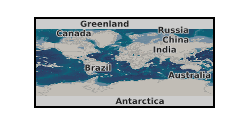
EngD thesis describing experiments carried out using a variety of sandstones. This thesis investigates the microbial response to 10 ppm oxygen and 100ppm oxygen in experiments representing deep saline aquifer conditions. All experiments were conducted using sandstone, artificial groundwater and a microbial community designed to represent conditions found within deep saline aquifers. A microbial community, containing sulphate reducing bacteria, was isolated and identified from sandstone samples and then used in the experiments. The experiments were batch microcosms, a high pressure bioreactor and column flow experiments. Analyses of these experiments were conducted through gas analysis, water chemistry and DNA analysis from microbial communities.
 NERC Data Catalogue Service
NERC Data Catalogue Service